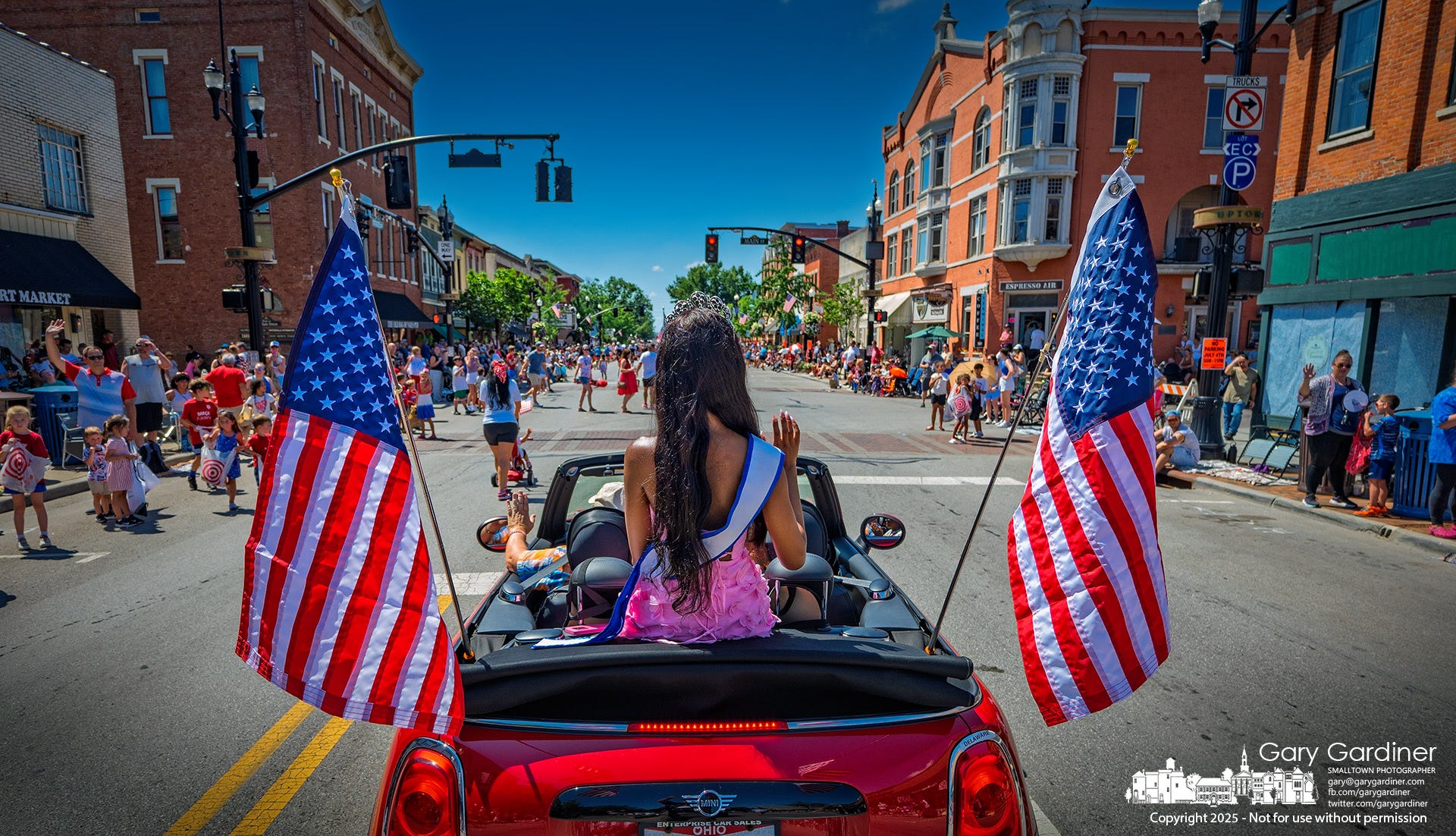From the Backseat: A Lesson in Perspective
When everyone seems to be jostling for the perfect front-row shot, it’s easy to forget that sometimes the most compelling stories are told from behind. Take this Fourth of July parade photo. At first glance, it looks like a straightforward small-town celebration. Look again.
You’re not on the sidewalk with the waving families. You’re not facing the parade as it rolls toward you. You’re riding shotgun. Well, technically, backseat in a convertible, following the flowing hair of one of the parade’s guests of honor as she glides down Main Street.
This is a perspective with purpose.
Most photographers instinctively position themselves in front of their subjects because the human face serves as our primary visual anchor. However, in this photo, choosing to photograph the subject from behind creates a more powerful effect: it invites the viewer into the scene. Instead of merely observing the parade, you feel as though you are part of it.
The backs of heads are often considered uninteresting. However, in this case, the subject's long hair and pageant sash draw your attention forward, in the same direction she is looking. The two American flags stand on either side of her like sentinels, directing your gaze down the street toward the waiting crowd. This technique—utilizing foreground elements to create a "frame within a frame"—is an effective compositional device.
This perspective effectively layers the narrative. The foreground, which includes the convertible, the girl, and the flags, provides context and identity. The middle ground, featuring spectators lining the curb, adds action and energy. The background, with historic buildings and traffic lights, places you in a real location. Together, these layers create a photograph that feels immersive and dynamic.
One advantage of this perspective is the sense of motion it creates. Since the car is part of the parade, it gives the viewer the feeling of moving along with it. This allows the audience to experience a shared journey through the town's center, something that a typical head-on shot rarely accomplishes.
Next time you’re photographing a parade, festival, or even a family walk, try resisting the urge to capture only faces. Instead, position yourself behind your subject and show what they see. This perspective allows the viewer to imagine the thoughts going through their mind. You might be surprised by how evocative and rich in storytelling this approach can be.
Key Takeaways
Perspective Transforms the Narrative
Shooting from behind the subject creates an immersive perspective, allowing the viewer to feel like a participant rather than just an observer. This choice renders the image more intimate and less staged.
Layering Adds Depth
The arrangement of the convertible and flags in the foreground, the crowd in the middle ground, and the buildings and sky in the background creates dimensionality in the photo. This layering naturally guides the eye through the scene.
Symbols Strengthen Storytelling
The American flags and the pageant sash symbolize patriotism and celebration. These recognizable symbols help effectively convey the story without words.
Color Can Be a Unifying Force
The dominant red, white, and blue palette ties every element together, reinforcing the theme. The deep blue sky contrasts vividly with the warm brick buildings and the bright flags.
Timing Captures Authentic Energy
The moment includes waving spectators, children, and casual movement—elements that show real community life rather than a posed tableau.
Unconventional Composition Stands Out
Focusing on the subject's back instead of her face is unexpected and compelling. It challenges the assumption that facial expressions are always the most important.
Details Tell a Bigger Story
The traffic lights, historic architecture, and parade participants ground the photo in a specific place and time, transforming it into a cultural document.
PhotoCamp Daily is not a newsletter about the technical skills required to be a good photographer or photojournalist. There are many videos, self-help books, training courses, and classes, and then there is the power of social media as an instructional tool.
PhotCamp Daily is about learning to experience making good photos and better observe subjects and their relationship to the story. Learning to express yourself better will become a collective view of your world and the new experiences you will encounter.
PhotoCamp Daily is always free! But you can pledge support at any time.
Consider subscribing to The Westerville News and My Final Photo News. Krista Steele's Into the Morning is also recommended.
My Final Photo News is a reader-supported publication. To receive new posts and support photography and commentary, consider becoming a free or paid subscriber.


